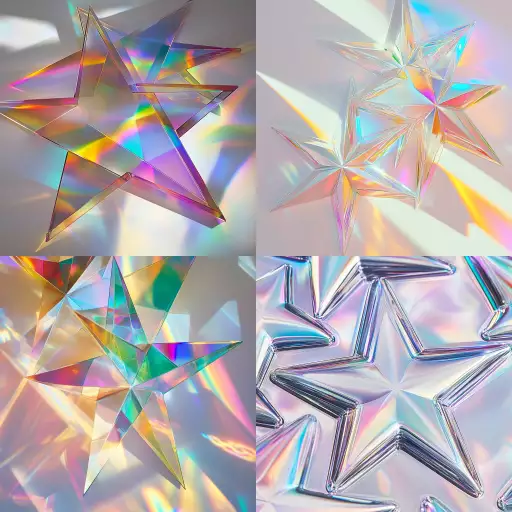Explore the Best AI Image Gallery

Beyond the Canvas: How AI-Generated Visual Content is Transforming Creativity
The realm of creativity has long been a domain of human expression, imagination, and skill. However, the emergence of artificial intelligence (AI) has introduced a new paradigm, one where machines can not only understand but also generate visual content. This blog post delves into the world of AI-generated visual content, exploring its impact on the creative industry, potential applications, ethical considerations, and future directions.
A Revolution in Content Creation
AI-powered tools are capable of producing a wide range of visual content, from realistic images and animations to unique artwork and design elements. These algorithms learn from massive datasets of existing images and code, enabling them to generate novel and often surprising creations. This opens up exciting possibilities for:
- Design and Advertising: AI can assist designers in creating eye-catching visuals for websites, logos, marketing materials, and even product prototypes.
- Entertainment Industry: Imagine generating realistic backgrounds for movies or video games, designing unique character models, or creating immersive virtual environments with the help of AI.
- Art and Illustration: AI can be a tool for artistic expression, allowing creators to experiment with new styles, generate unique concepts, and push the boundaries of traditional art forms.
Navigating the Ethical Landscape
While the potential benefits of AI-generated visual content are undeniable, it is crucial to address the ethical considerations that accompany this technology:
- Copyright and Ownership: When an AI creates a work, who owns the copyright? This is a complex legal question that requires careful consideration.
- Bias and Representation: AI algorithms are trained on existing data, which can reflect societal biases. Its essential to ensure that AI-generated content does not perpetuate harmful stereotypes or discrimination.
- Transparency and Accountability: The decision-making processes of AI algorithms can be opaque. It is important to strive for transparency in how AI generates content and to establish clear lines of accountability.
The Future of Creative Collaboration
Looking ahead, the relationship between humans and AI in creative endeavors will likely evolve into a collaborative partnership. Imagine:
- AI as a Creative Assistant: AI tools can help artists overcome technical challenges, explore new ideas, and streamline their workflow.
- Augmented Creativity: Wearable technology and AR/VR interfaces could allow for immersive creative experiences, where AI enhances human imagination and expression.
- Personalized Content Creation: AI can tailor visual content to individual preferences, creating unique and engaging experiences for each user.
Conclusion
AI-generated visual content is poised to revolutionize the creative industry, offering exciting possibilities while also presenting ethical challenges. By embracing a collaborative approach, fostering responsible development, and prioritizing human creativity, we can harness the power of AI to unlock new dimensions of artistic expression and innovation.
















](https://images.ai-img.art/thumbnails/150/157712d76865d557120f9baf988de3d0525225295a2789c89bf2c4a5a96a03d1.webp)




![**Representation: A dog acting as a private tutor to a child. The dog holds a ruler in its paw and stands at the blackboard to explain a dog diagram to the child. Graphic style: Line drawing, cartoon style, influenced by Franco-Belgian comics, thick black lines, simplified design, vector, black and white only, in the style of Keith Haring or the French comic strip "Alinéa". [IMPORTANT]: A single continuous line extending from one side of the image to the other, minimalist, strong outlines, line drawing, without lifting the hand, ultra-simplified, no shading, entirely white image, drawing created in the center of a sheet of paper. --ar 16:5** - <@627984126871470085> (fast)](https://images.ai-img.art/thumbnails/150/7a854648a81e51241dcca8d24dd6e3bfcf07ad1df51baf401c9b729f4cf411fa.webp)





![**Representation: A teenager smiling while thinking about a friendly dog, a comic-style thought bubble with a friendly dog inside. Graphic style: Line drawing, cartoon style, influenced by Franco-Belgian comics, thick black lines, simplified design, vector, black and white only, in the style of Keith Haring or the French comic strip "Alinéa". [IMPORTANT]: A single continuous line extending from one side of the image to the other, minimalist, strong outlines, line drawing, without lifting the hand, ultra-simplified, no shading, entirely white image, drawing created in the center of a sheet of paper. --ar 16:5** - <@627984126871470085> (fast)](https://images.ai-img.art/thumbnails/150/6fc850f638e3dee0c4b121acecad2c8419e02bdeac7f871d625f1003c1c3abe1.webp)



![**Representation: A dog acting as a private tutor to a child. The dog holds a ruler in its paw and stands at the blackboard to explain a dog diagram to the child. Graphic style: Line drawing, cartoon style, influenced by Franco-Belgian comics, thick black lines, simplified design, vector, black and white only, in the style of Keith Haring or the French comic strip "Alinéa". [IMPORTANT]: A single continuous line extending from one side of the image to the other, minimalist, strong outlines, line drawing, without lifting the hand, ultra-simplified, no shading, entirely white image, drawing created in the center of a sheet of paper. --ar 16:5** - Variations (Strong) by <@627984126871470085> (fast)](https://images.ai-img.art/thumbnails/150/f4e034998ccd869d8a061fd12017514fcd92210eb33d4222dc9b54716223f4dd.webp)
](https://images.ai-img.art/thumbnails/150/9d51c5e673b4f2068b7b01abc35425a06f173b76303adf9ad29ca14302c25b18.webp)









](https://images.ai-img.art/thumbnails/150/51c93500396faff4e7fa8b42bc68033067b16b2230e3496e95c482a581ff0fe9.webp)

